Extraordinary (96-100)
Outstanding (93-95)
Very good to Excellent (89-92)
Above average to Good (86-88)
Below Average to Average (80-85)
Avoid (below 80)
More info >
In 1994 chef Magnus Ek, together with his wife Agneta Green, opened his first restaurant on an island in Stockholm's archipelago called Oaxen, naming the restaurant Oaxen Skärgårdskrog. Over time the restaurant gained popular and critical acclaim and it entered the World's 50 Best Restaurants list in 2006 at number 48 (Noma entering that same year at number 33) and managed to maintain a ranking in the Top 50 for four consecutive years.
In 2010 Magnus and Agneta announced that they were looking to relocate the restaurant to a more central location in Stockholm and that Oaxen Skärgårdskrog would close after the summer of 2011. The couple found a new site for the restaurant in an old shipyard in Stockholm's Djurdgården, and they reopened their restaurant in 2014 renaming it simply Oaxen Krog. The new building also houses Oaxen Slip, a more casual bistro-style restaurant and the owners' six-cabin hotel ship Prince van Orangiën is moored near the restaurant.
Oaxen Krog is open for dinner Tuesday through Saturday and offers a multi-course seasonal tasting menu for SEK 2,100 (£178). I had dinner at Oaxen Krog on 25 April 2018 and the menu featured 10 courses and appetisers. The restaurant's wine list is extensive, almost encyclopedic in certain areas, but also quite expensive (it is Sweden, after all). It focuses strongly on the old world, with many organic wines and an excellent selection in Burgundy in particular. Affordable options were relatively few and far between.

The evening started with chef Ek presenting and explaining that night's ingredients tableside, the ingredients presented in a beautiful wooden display. Shortly after, the meal kicked off with no fewer than eight appetisers, starting with some cured Norräna herring with brown butter and pickled sand leek "capers", served on some tender potato. A delicious bite, the herring offering a nice long finish. Equally delicous was melting, homecured pork belly (from a 6-year-old pig from Jämtland) with Jerusalem artichoke crème and a ramson crisp.
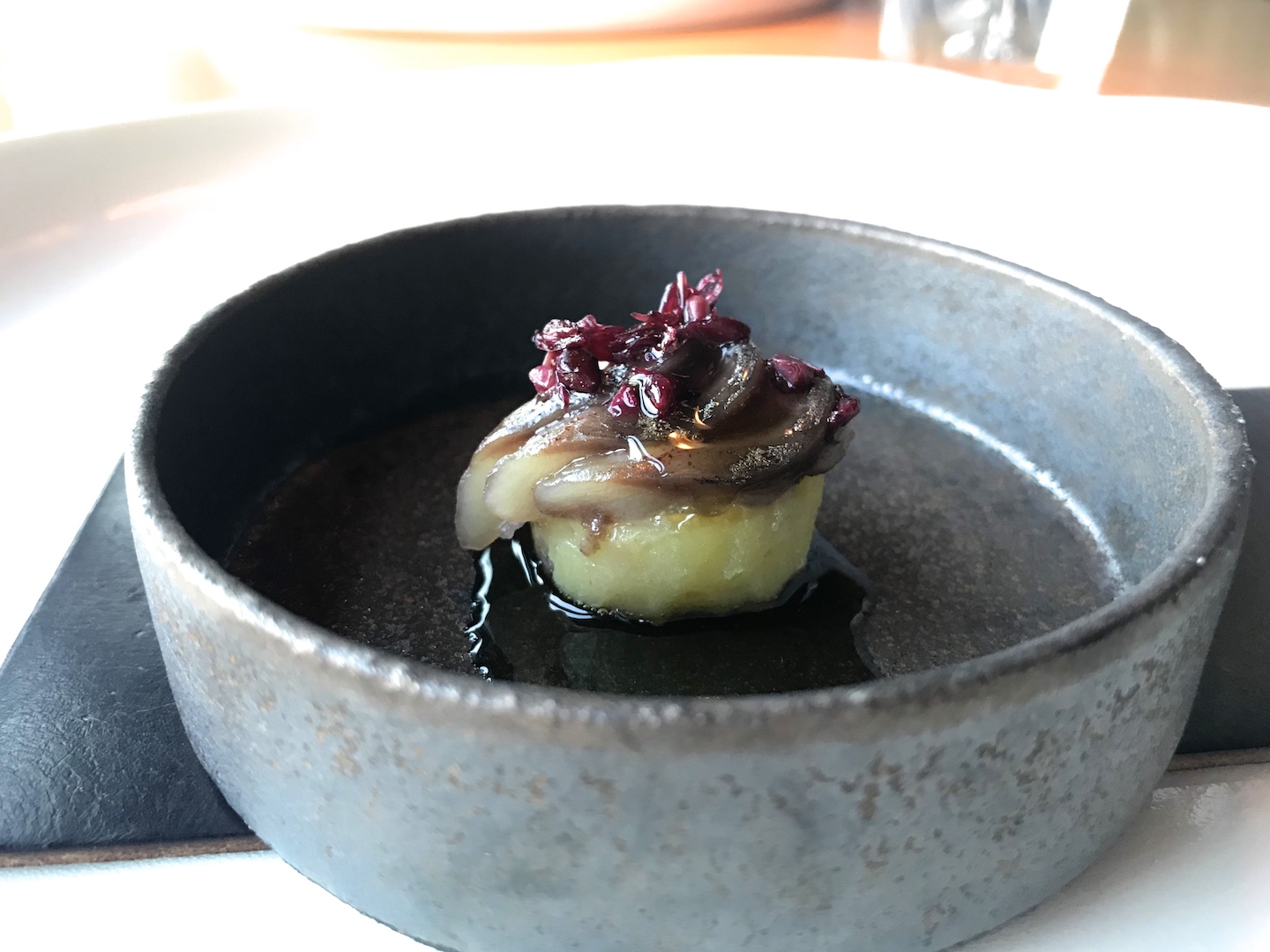
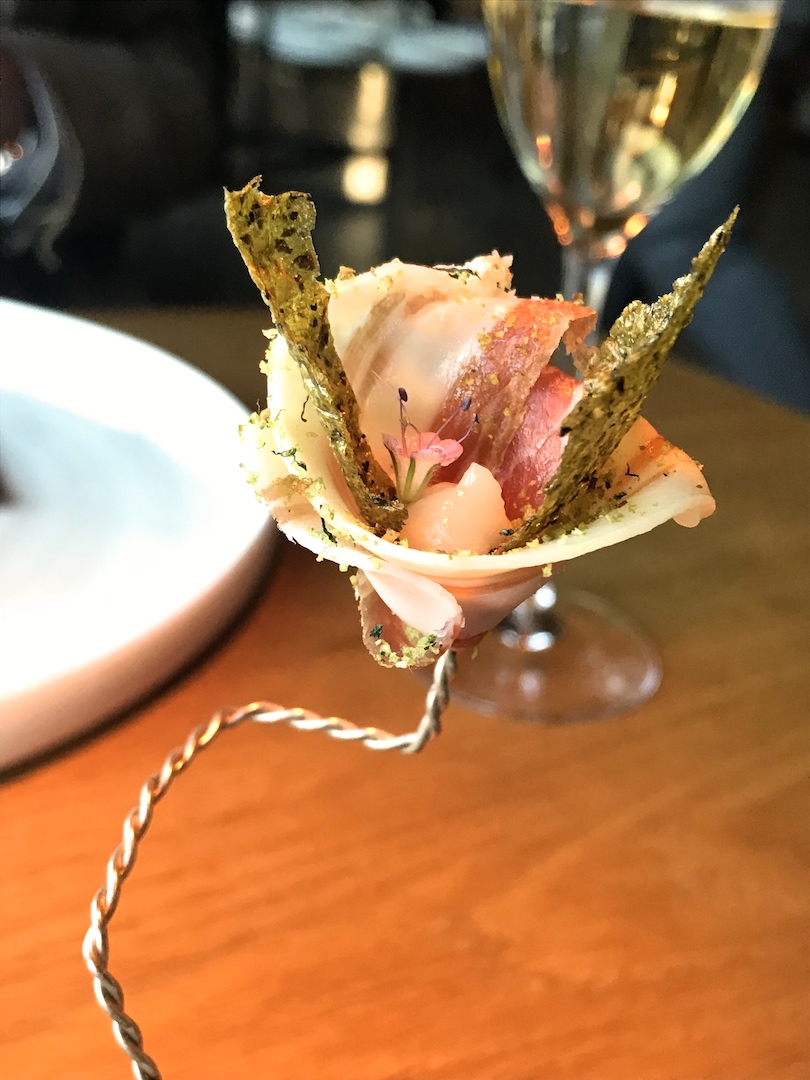
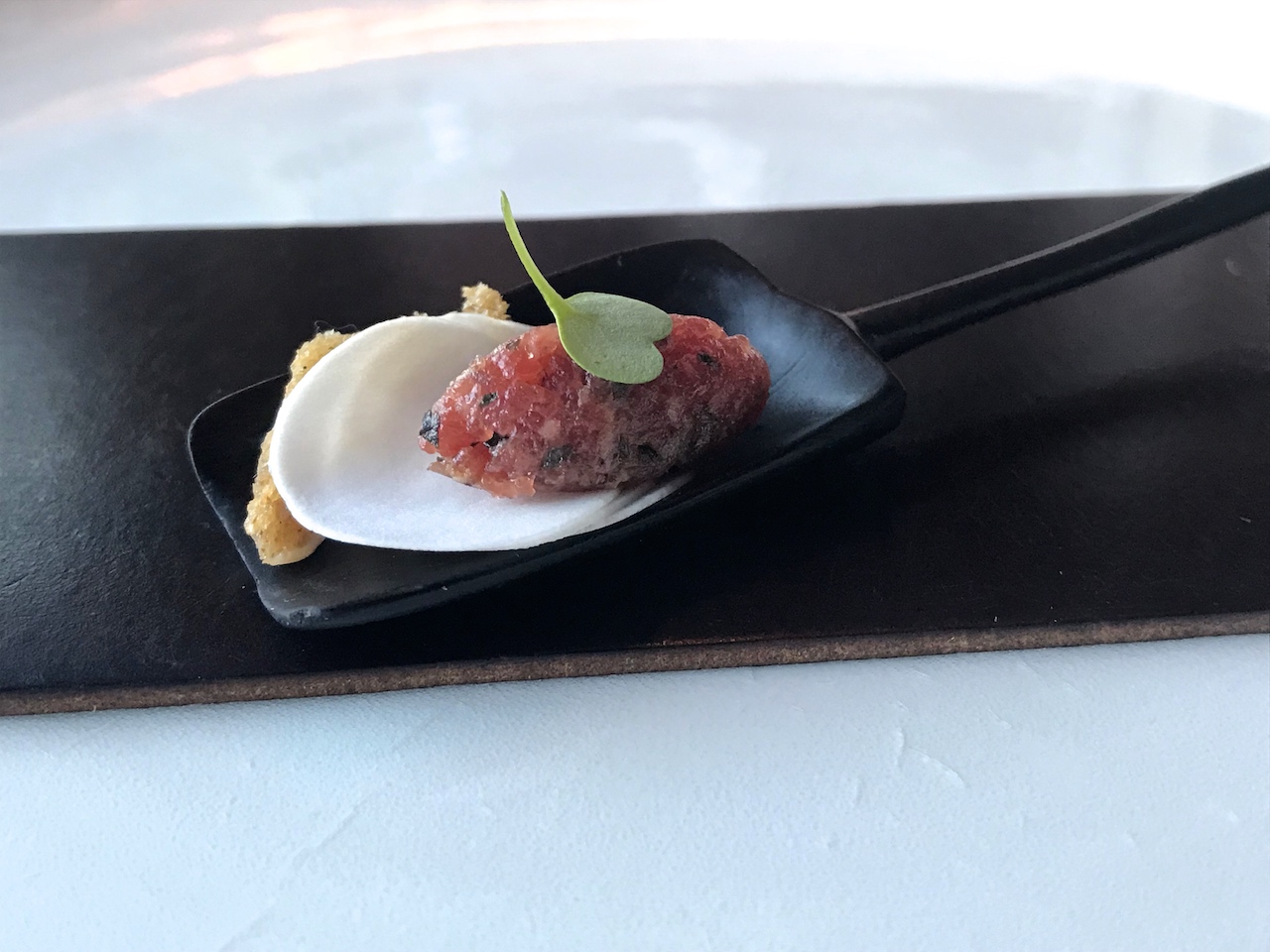
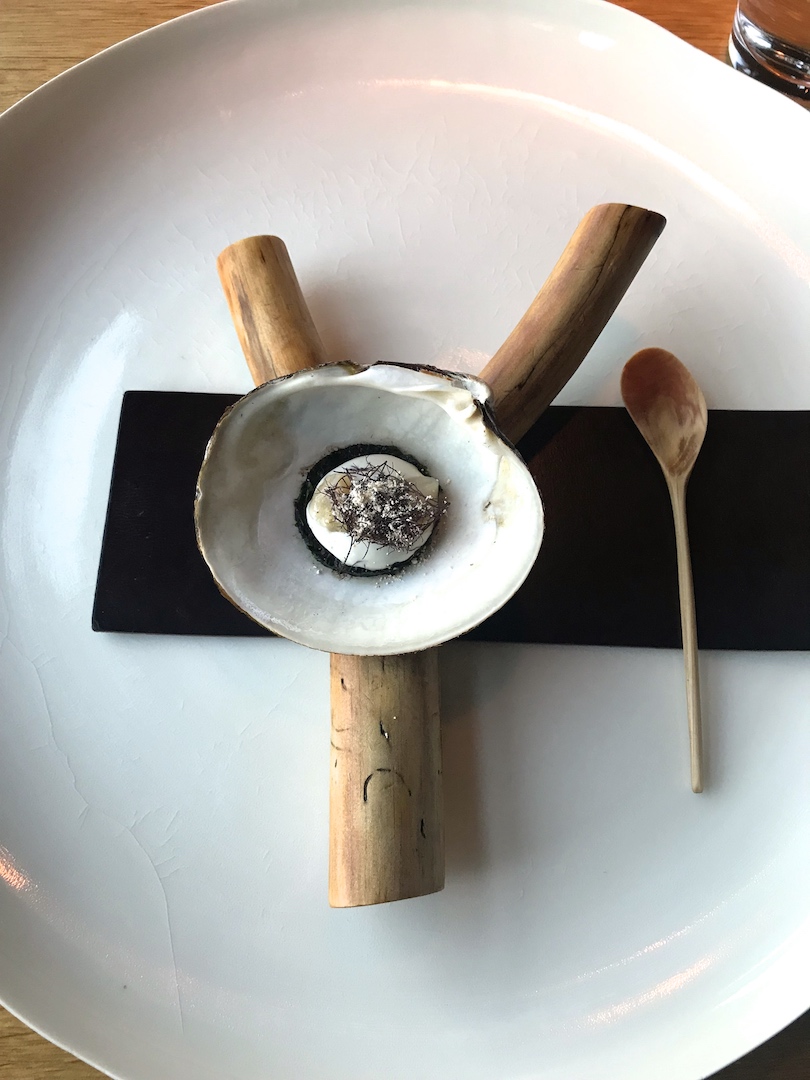
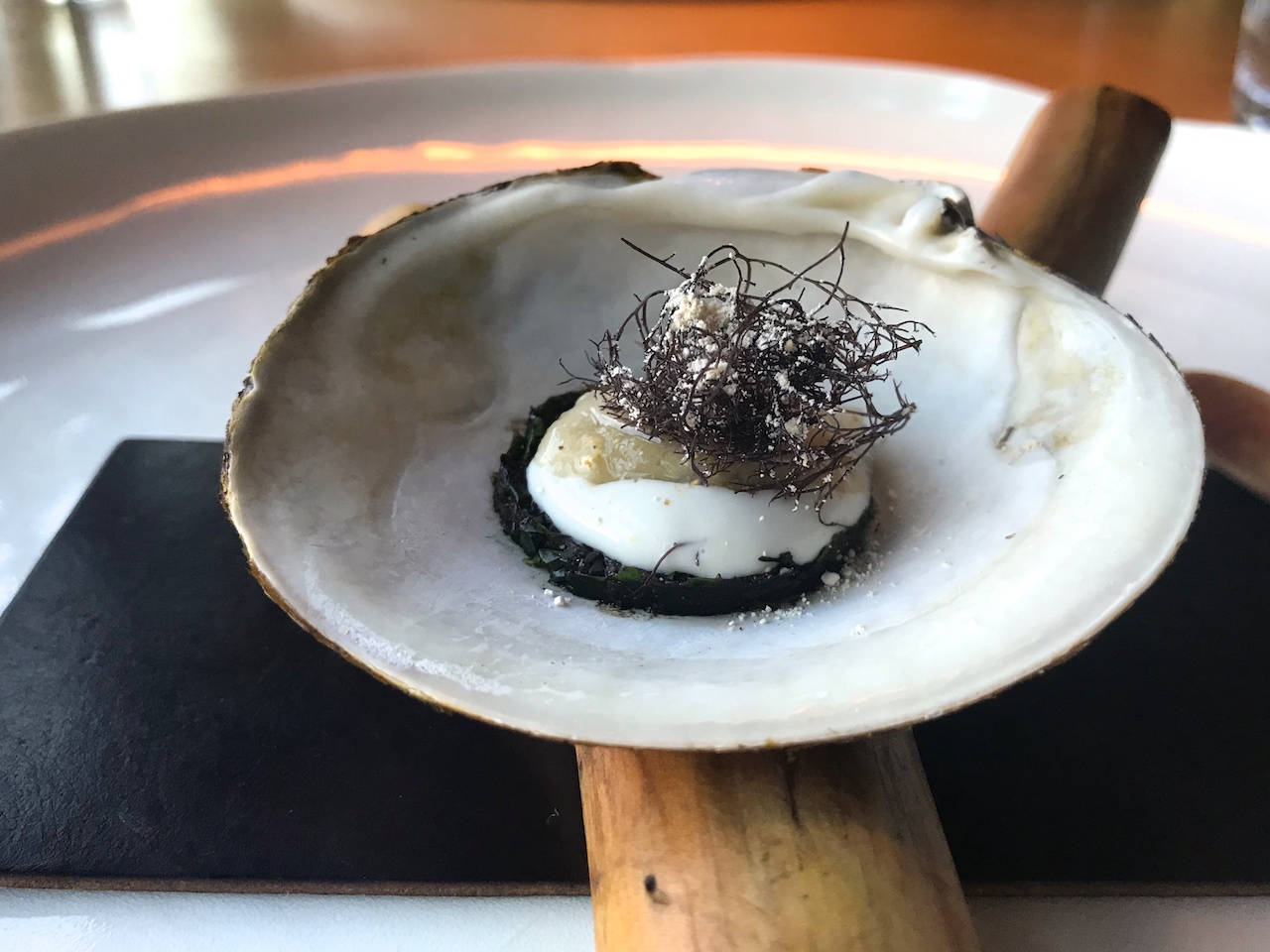
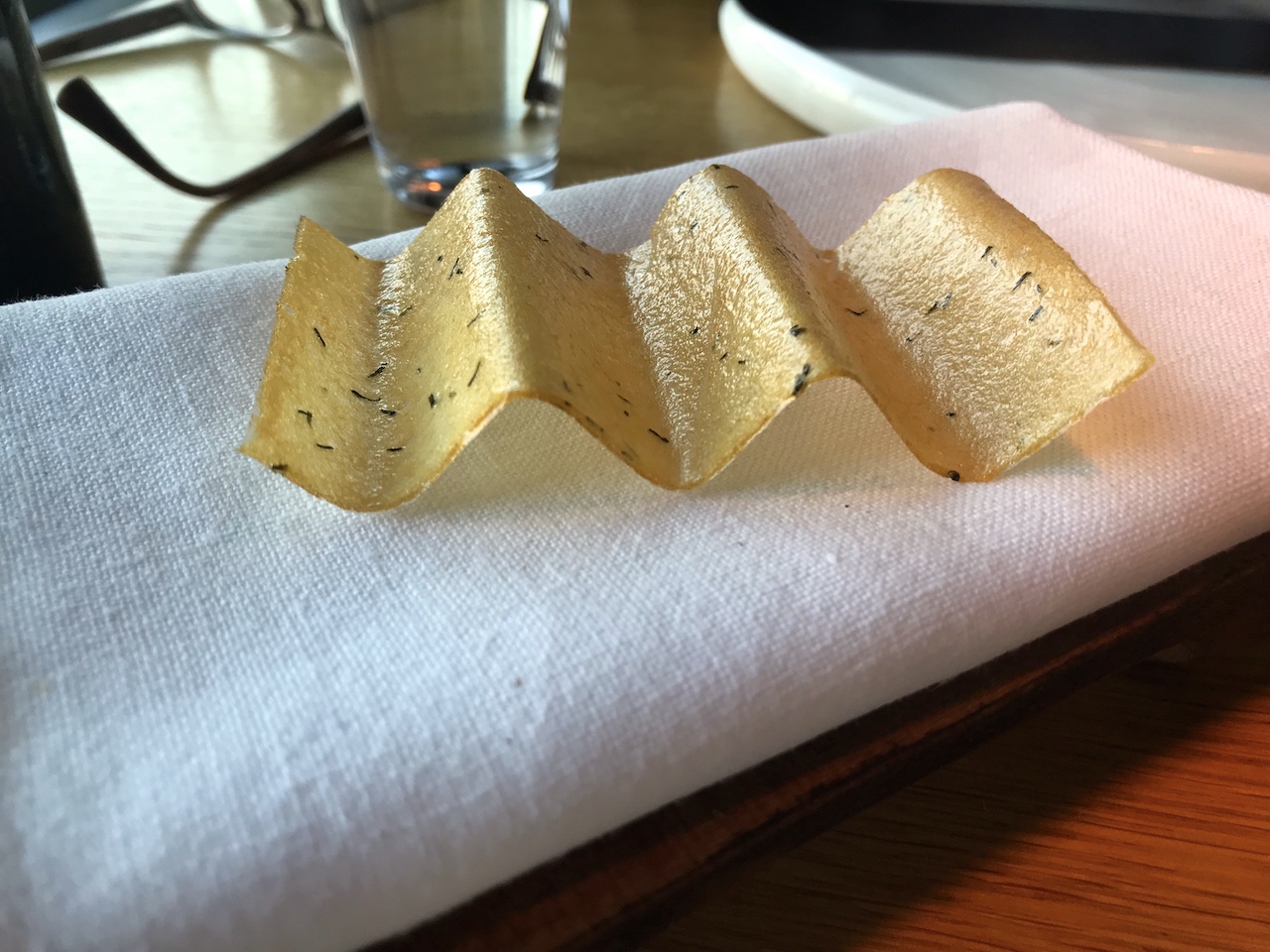
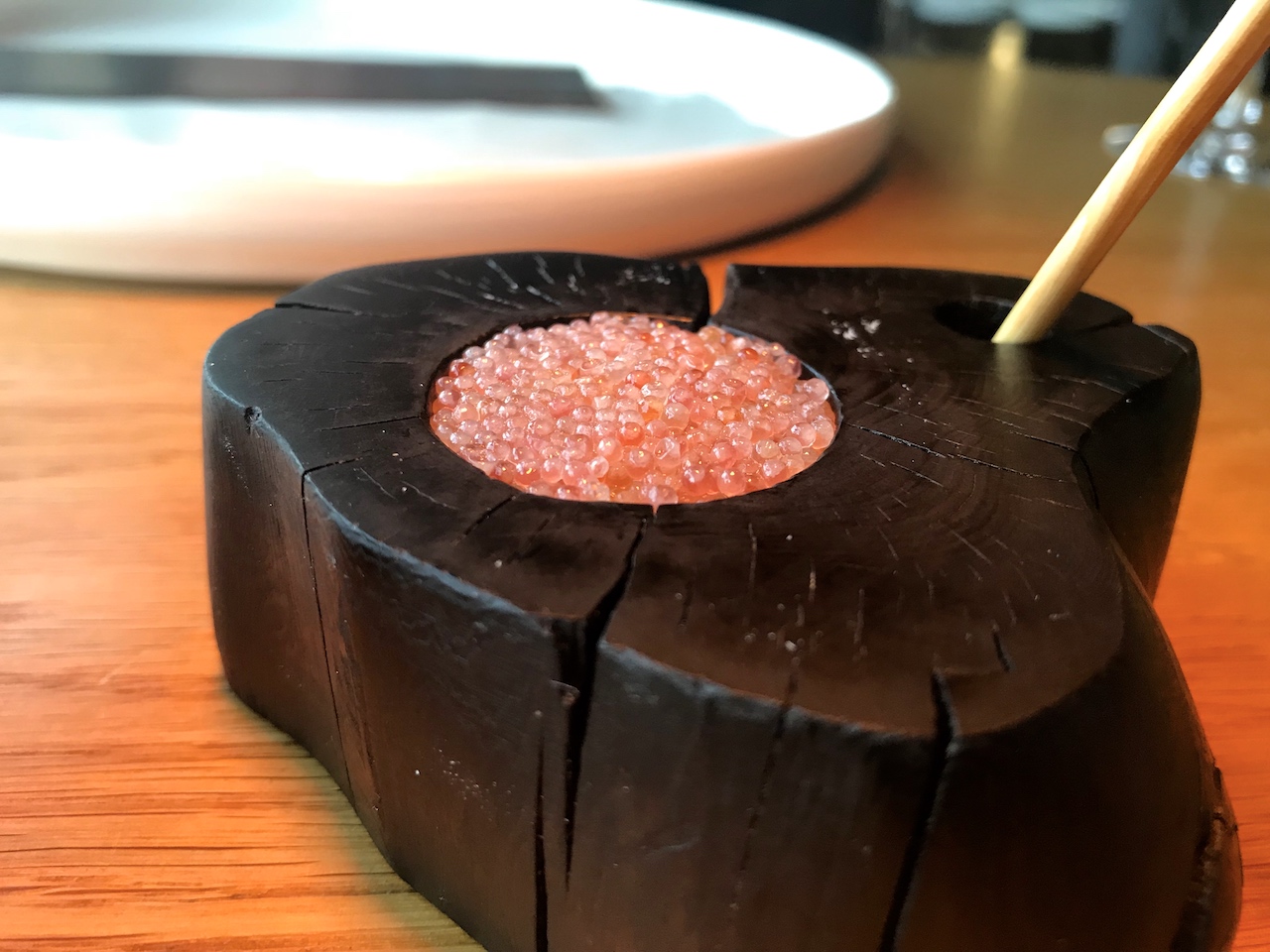
Tender Swedish squid followed, served here with pickled elderberry capers, shredded lovage and a few little dots of intensely flavoured squid ink emulsion. A terrific, intricate little bite, the capers offering a lovely sharp counterpoint, enhancing the squid's sweetness.

The penultimate appetiser was a juicy shrimp topped with a smoked crème, covered with transparent lemon verbena kombucha jelly, and accompanied by a concentrated shrimp-shell flavoured crisp garnished with some dill crème. A creative combination, the shrimp crisp with dill being an original take on the classic Swedish prawn and dill combination.
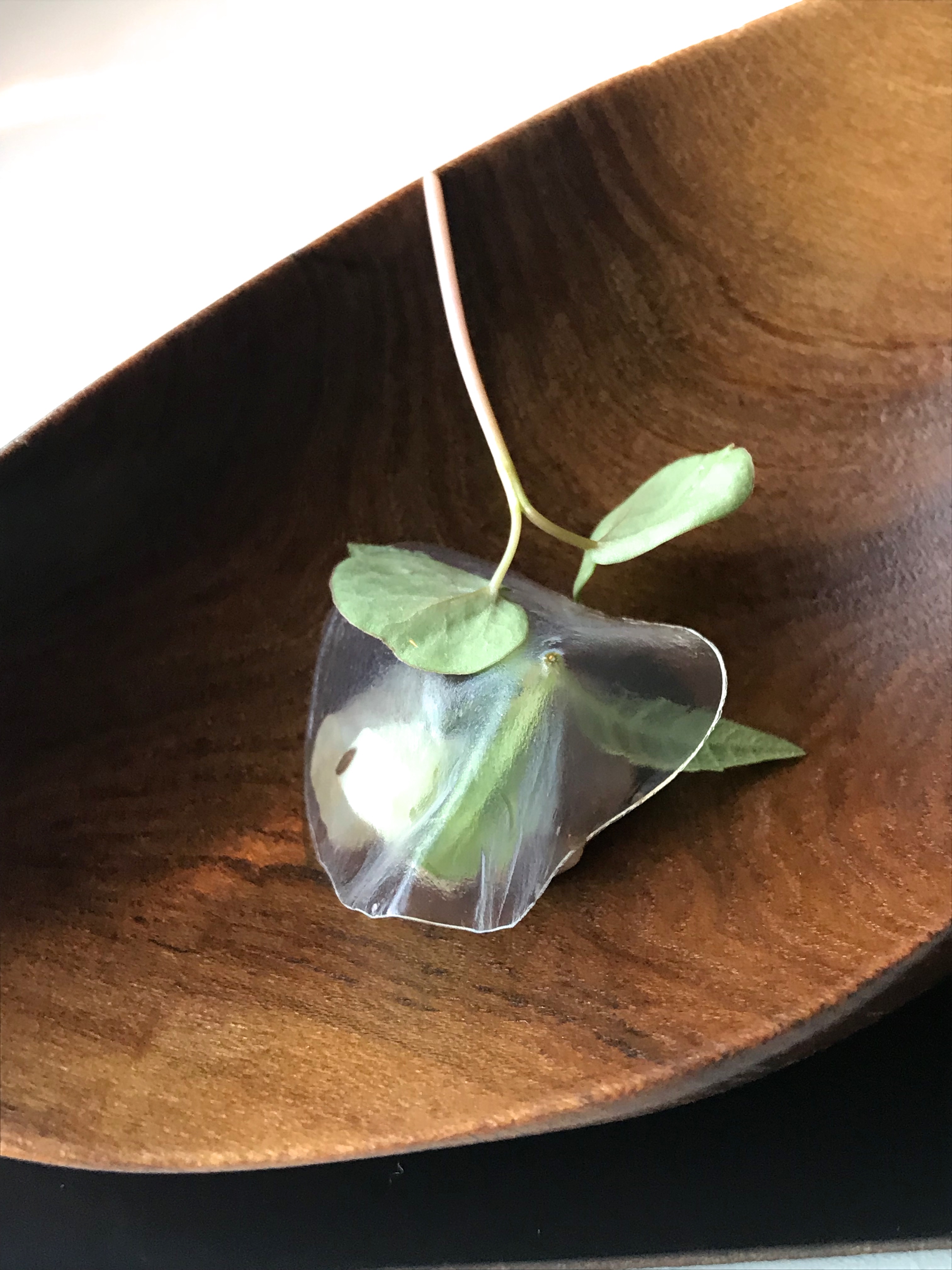
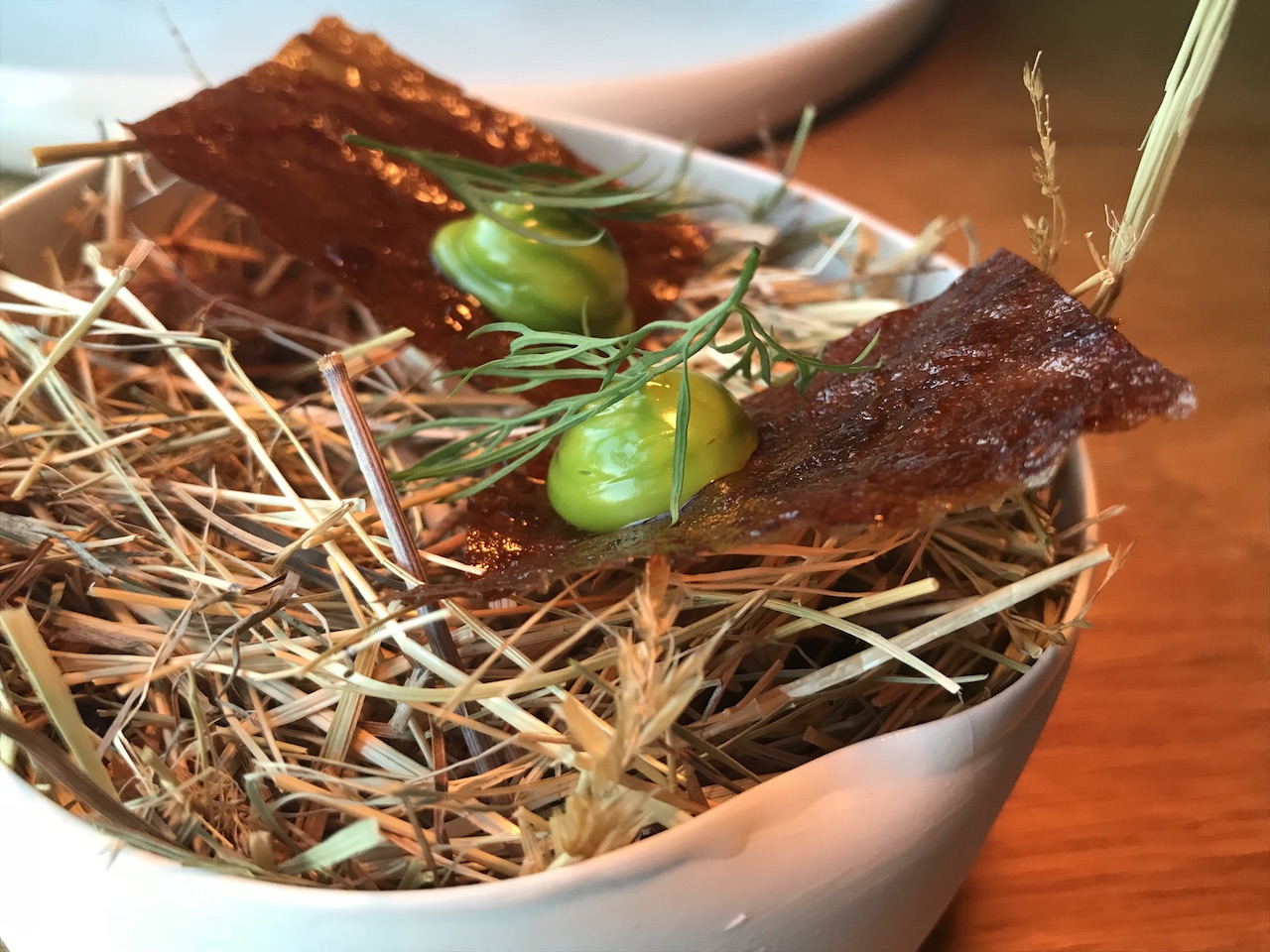
And finally there was a slice of grassfed Swedish Wagyu (topside) served with corn crème and a potato "soy sauce", the latter having lovely fruity notes.

At Oaxen Krog the appetisers' selection is labelled "Förför", seduce/seduction in Swedish, and seducing they were. These carefully executed appetisers made for an impressive start of the menu. Flavours were precise, pure and sophisticated.
Bread was served before the start of the tasting menu proper, and included a light rye sourdough, made with a starter that dates back some 15 years to when the restaurant was still located on Oaxen. The real eyecatcher though, was a magnificent dark-brown "Pilsner Kavring"-style bread made with rye, pilsner, yoghurt and sugar syrup. The bread was served with unsalted and so-called "virgin" butter.
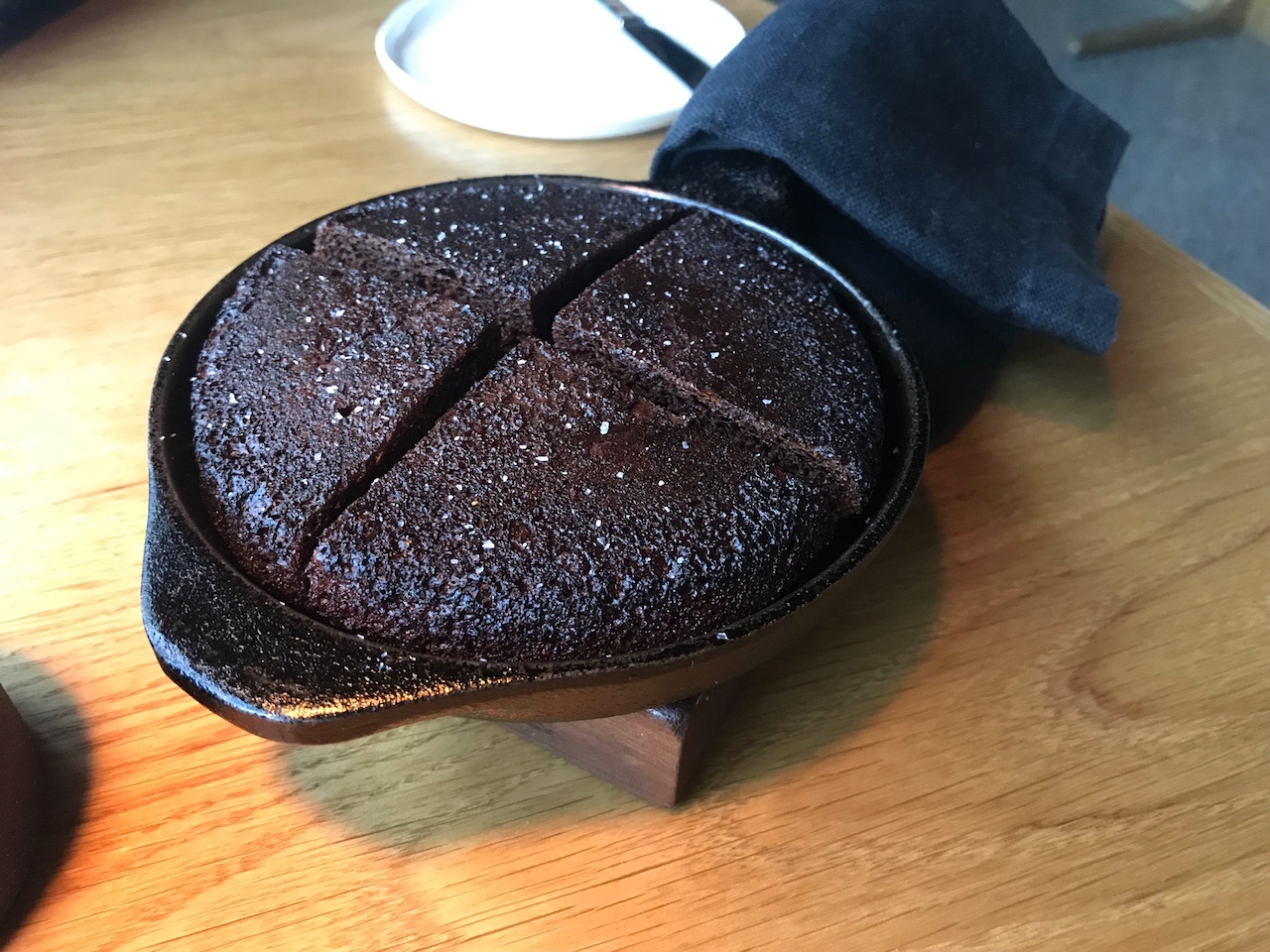
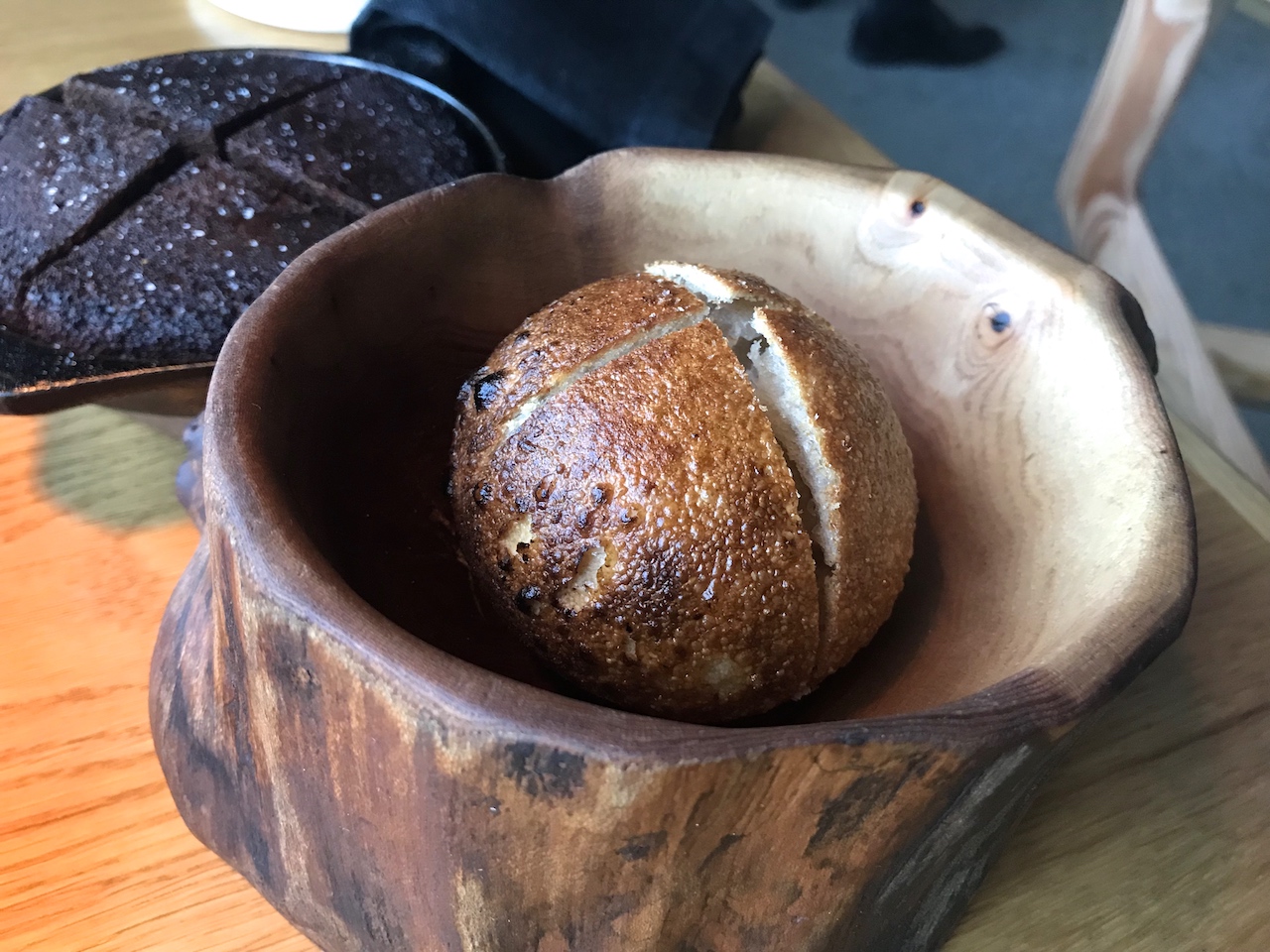
First course of the tasting menu was an elegantly presented dish of raw Norway langoustine, gently seasoned/marinated with horseradish cream, topped with pickled gooseberries, thin slices of fermented pear, little dulse crisps, and finished with pear juice seasoned with grilled juniper oil. A splendid first course, the langoustine complemented wonderfully by the subtle savoury sweetness of the pear, and the mellow pear juice was lifted perfectly by the juniper oil. Good use of horseradish too, giving the dish a nice little piquant kick.
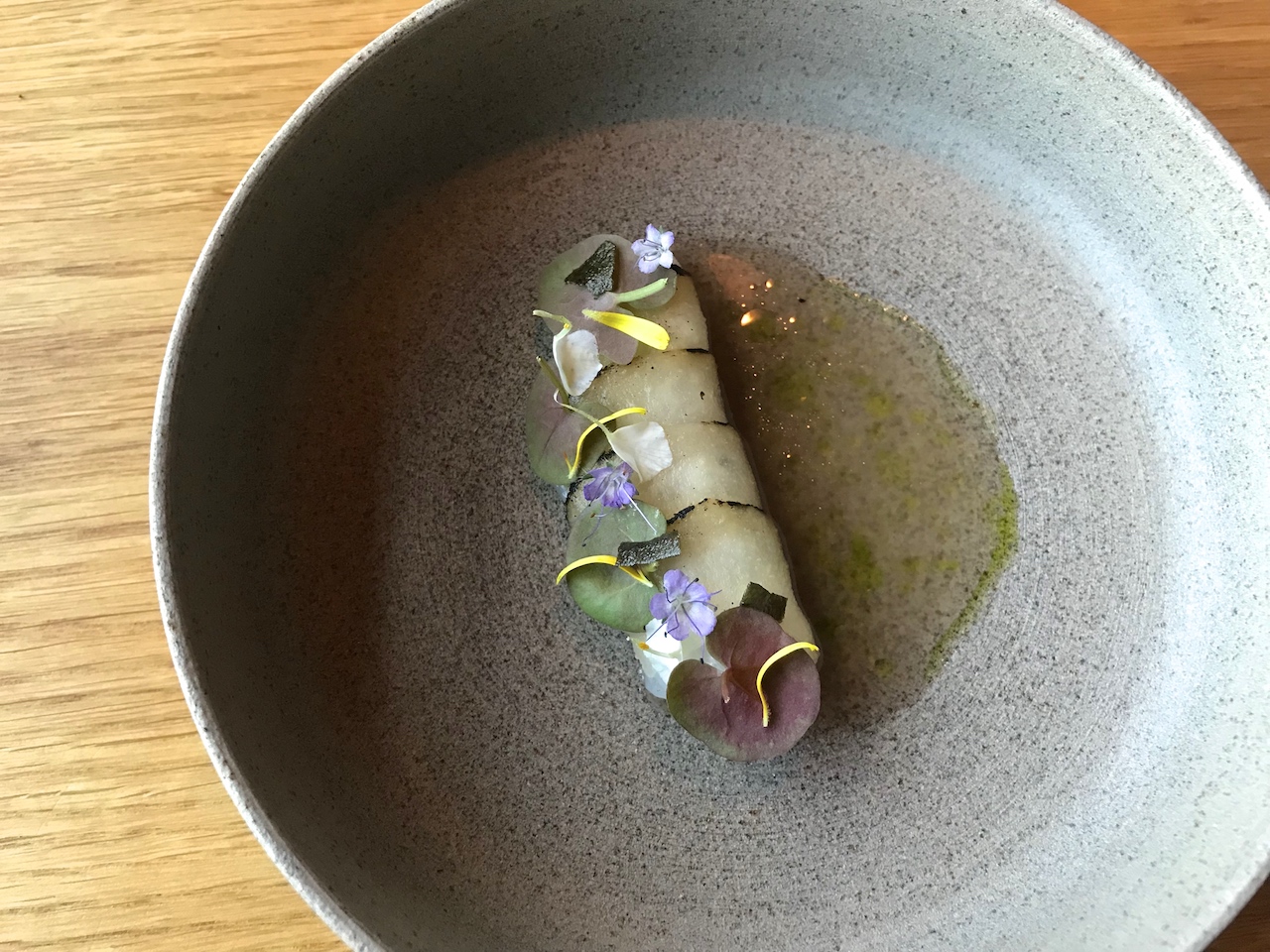
Second course was a a circle of salsify pieces, cooked à la barigoule, and with a wonderful centre of hay-smoked salsify puree, crunchy toasted buckwheat, a little marinated onion ring, and smoked ox bone marrow, covered with a caramelised whey and cream sauce. An exquisite and well-balanced range of flavours and a wonderful interplay of textures. There was warmth and comfort, with pure salsify flavours shining through, and the smoked puree and marrow gave the dish a very attractive finish.
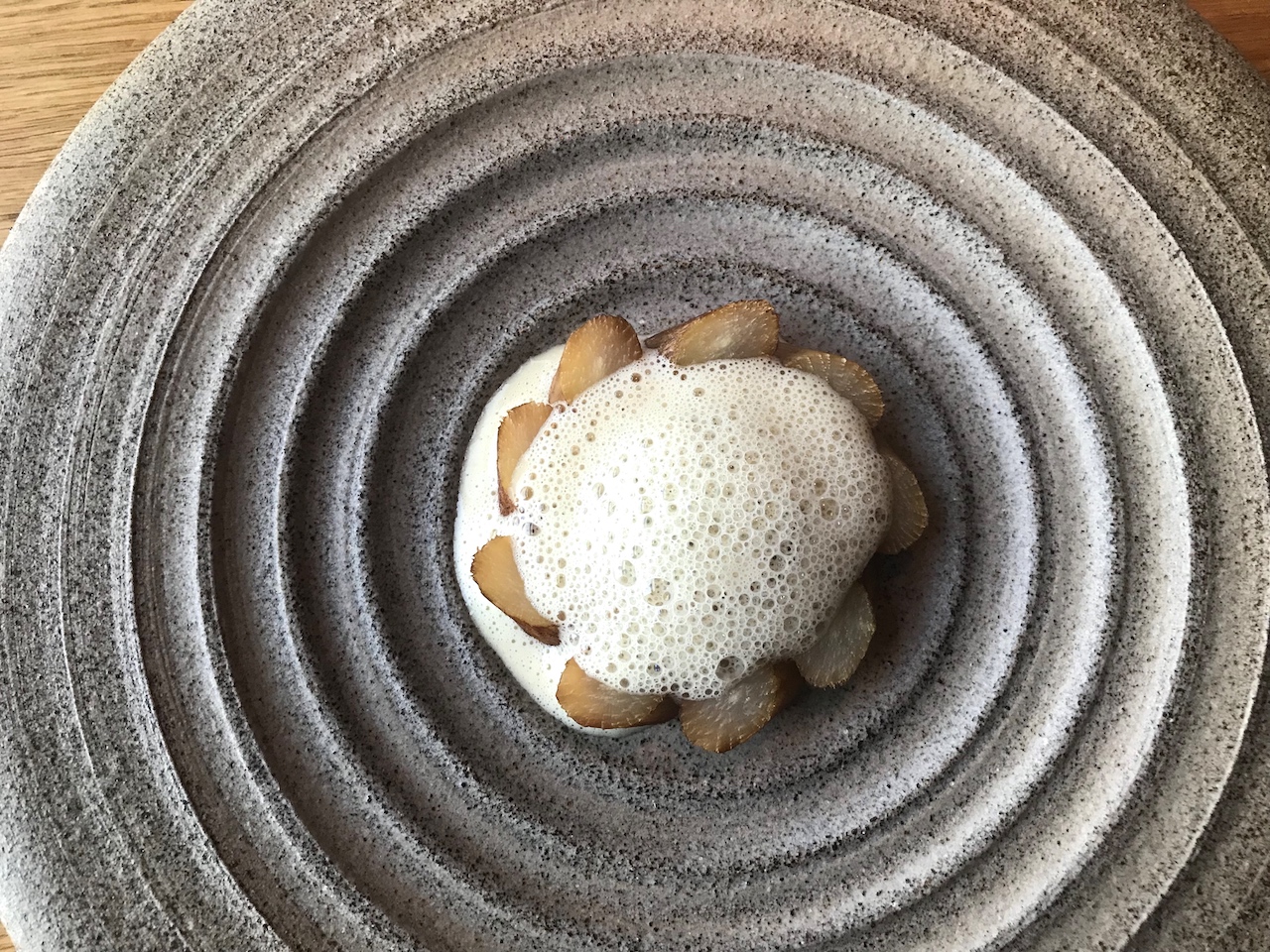
Next up was a salad of blistered pointy cabbage leaves, lightly coated with a potato miso and chopped hazelnut dressing, and accompanied by "soured" Jerusalem artichoke cream, and edible young beech leaves. An unusual but cleverly paired combination of flavours and textures, the Jerusalem artichoke cream delivering an elegant funky touch, and the potato miso offering great flavour impact and complexity. The hazelnuts didn't just offer crunch, but also added a nice richness/butteriness. A brilliant dish.

Time for the fourth course: first of the season asparagus (from Gotland), grilled and served with finely chopped pickled rhubarb, sugar kelp and ramson leaves, complemented by a creamy sauce made with fermented asparagus and grilled parsley oil, and luxuriously finished with some Finnish caviar. An outstanding dish that offered everything you'd want, and more. There's purity (the asparagus), there's piquancy (the ramson), there's acidity (the rhubarb), there's umami (the kelp), there's a touch of comfort (the creaminess of the sauce), and finally a touch of saltiness and luxury (the caviar).

Fifth course was a relatively modest dish of scallop, sliced black radish, buttermilk crème, and Labrador Tea oil. The scallop had been lightly marinated in a shellfish garum (aka Roman fish sauce, made here with langoustine heads), delivering a subtle but noticeable taste; the subtleness also applied to the other ingredients, allowing the scallop to be the main star.
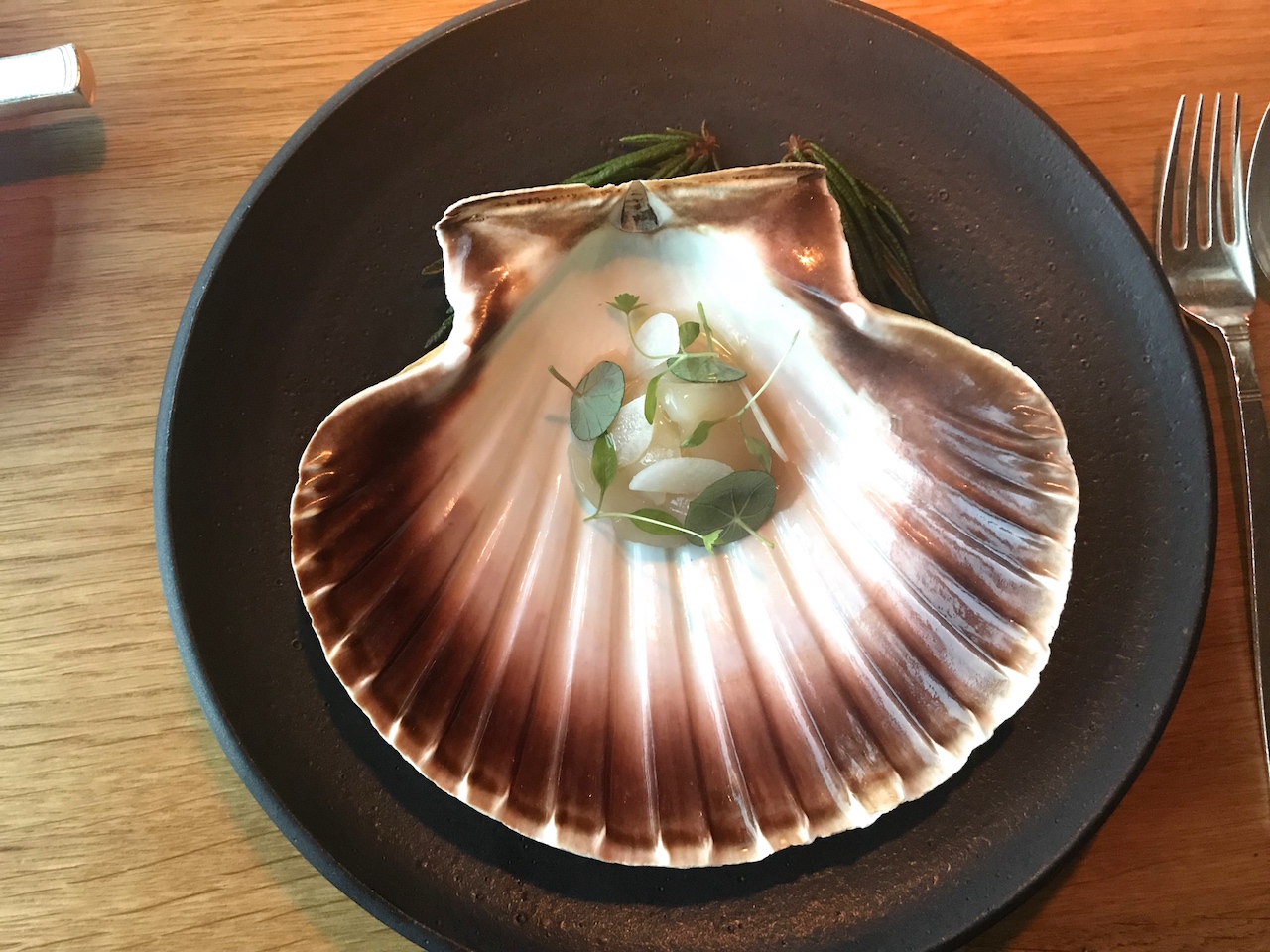
The final fish course today was cod, served with a gorgeous pressed langoustine head sauce enriched with dill butter, preserved unripe plum, and some potato puree seasoned with "flowering dill". An exquisite dish with beautifully cooked, flaky cod, but best of all were the perfectly controlled, intense dill flavours, which made this dish really interesting.

Seventh, and first of two meat courses, was Swedish pork served with preserved apple (fermented in beeswax), and a wonderfully pure-tasting pork jus enriched with pork fat. Also on the plate were little dots of rosehip puree, pickled rose leaves, "mushroom lard" and a light celeriac cream. A dish with distinct flavours but served in a particularly elegant fashion. The pork had been lightly smoked, resulting in firm, pink flesh that was fabulously succulent. But more importantly a thick layer of fat had been left on, deepening and enhancing the overall taste, and providing some deliciously crisp crackling. Pairing pork with apples always works a treat, but the use of preserved apples gave the dish a nice twist.
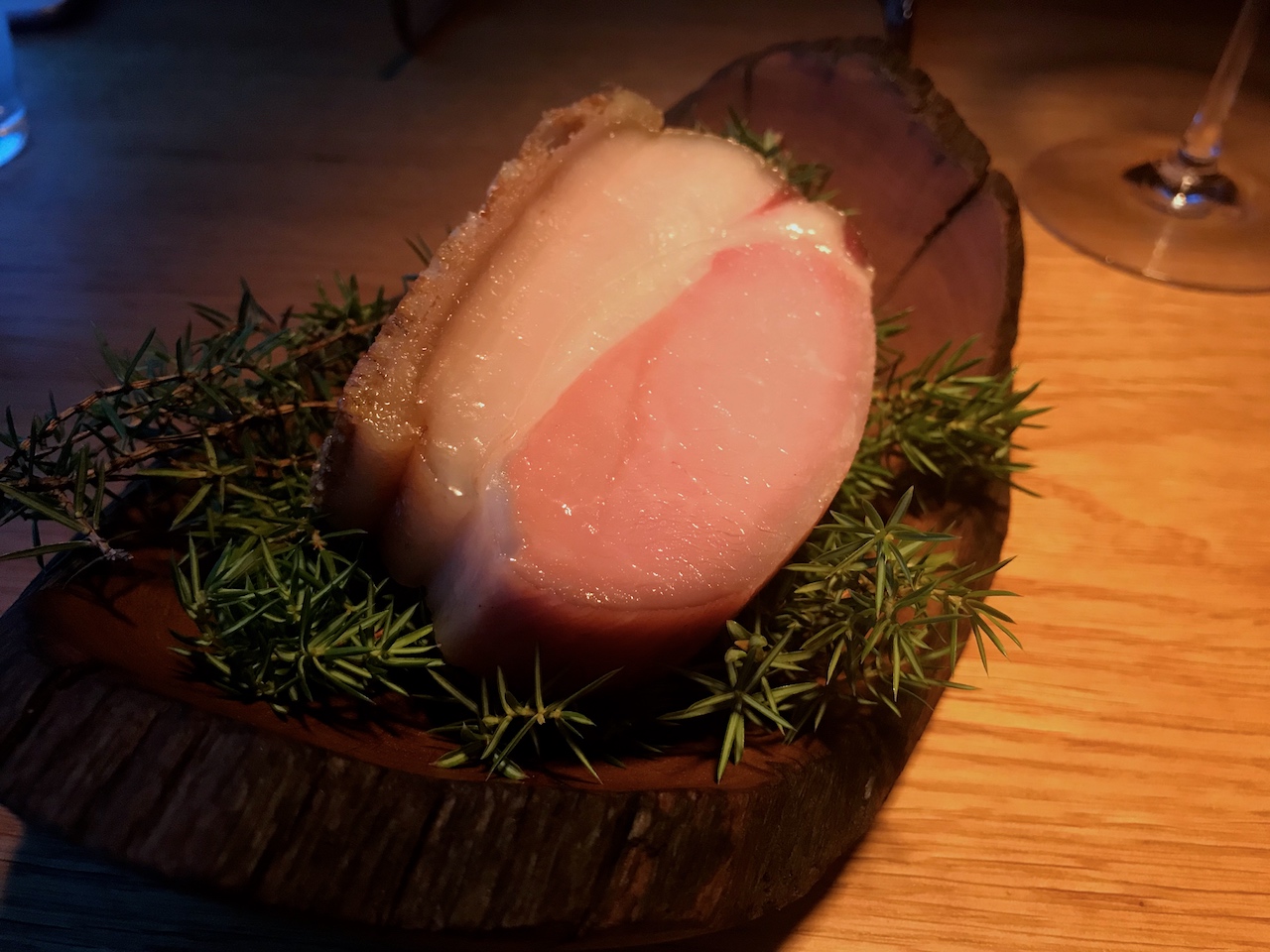
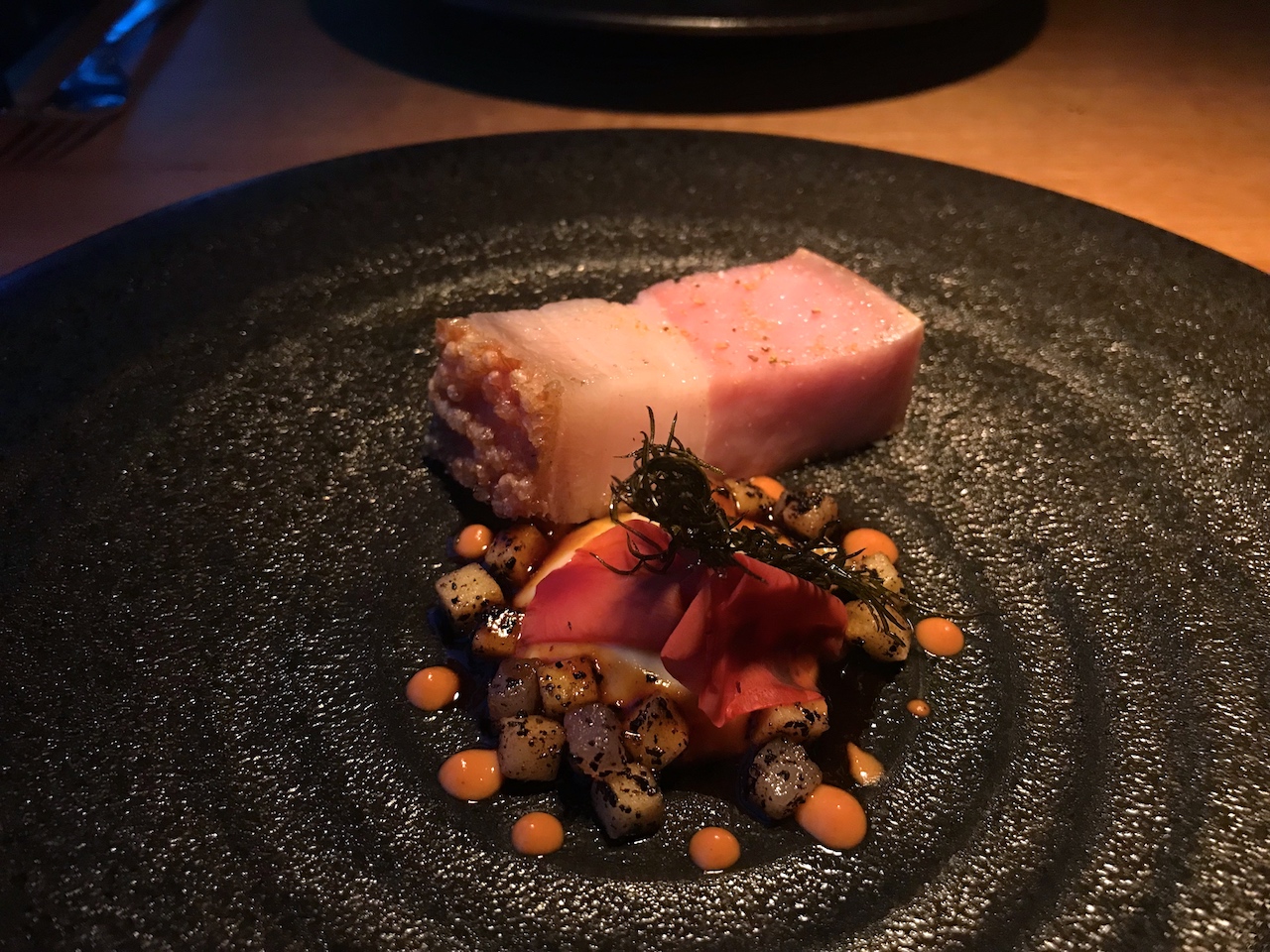
The second meat course was tender and elegantly gamey Swedish duck with chanterelle mushrooms, onion puree topped with ramson capers, a little piece of barbecued leg meat, and a spruce crème covered with ever so thinly shaved celeriac. Ordinarily, I'm not too keen on two meat courses in a tasting menu, but here it worked swimmingly, mainly because of the clever and original choice of accompaniments, which delivered a well-balanced, linear flavour experience with just the right touch of richness. Too much richness at this point in the meal, especially after the pork, would have been overwhelming.

Before dessert we were served some delicious, attractively presented, palate cleansers. Yellow: cloudberry sorbet, pink: raspberry sorbet, and red: dewberry sorbet.

This was followed by a savoury-sweet dessert of sliced green strawberries, green strawberry jam flavoured with pear miso, little nuggets of frozen goat's cheese, and pineapple weed granita. A lovely combination of fresh flavours, with a nice light sweetness coming from the strawberry jam, the goat's cheese delivering an unconventional kick, and the granita giving the dessert a final lift.
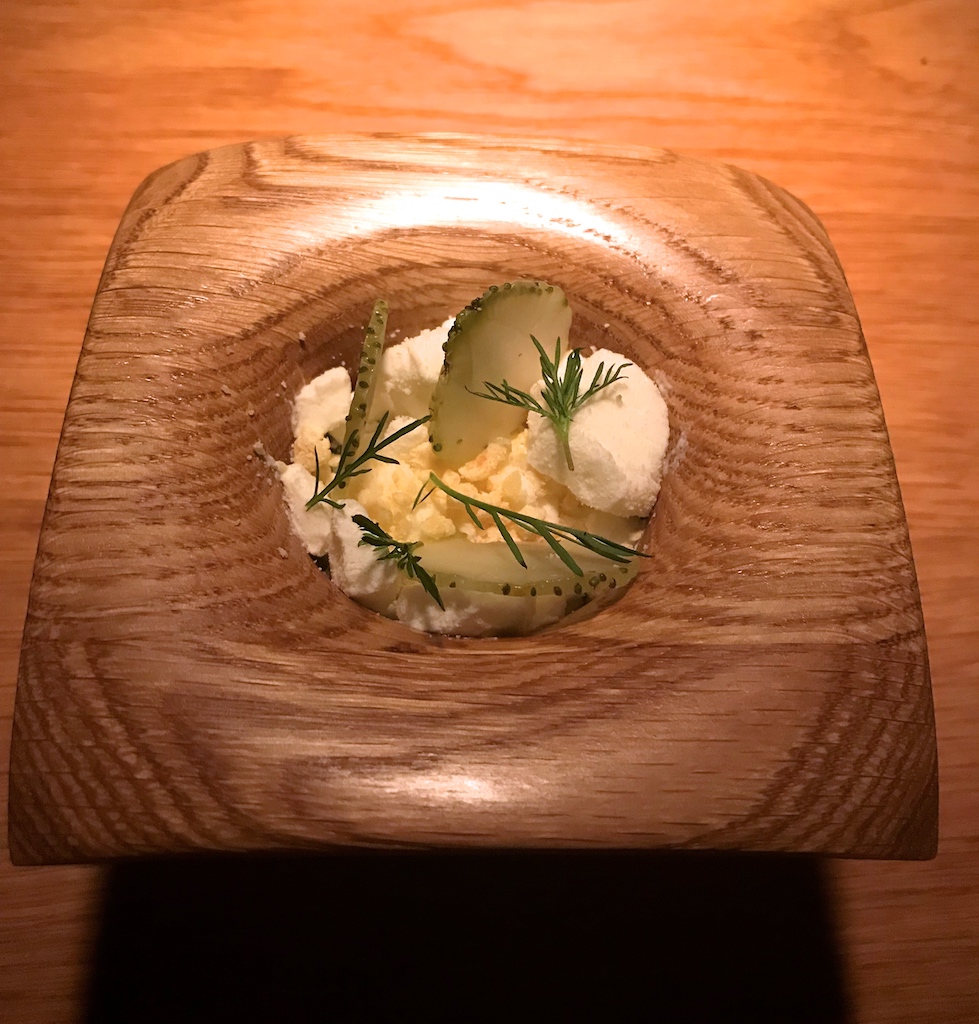
Second dessert was Angelica ice cream placed on top of a hemp seed praline and accompanied by preserved blueberries, and blueberry and white chocolate triangles. The Angelica ice cream had a wonderful balance between creaminess and freshness, but best of all was the luxurious-tasting hemp seed praline, which added a lovely richness.
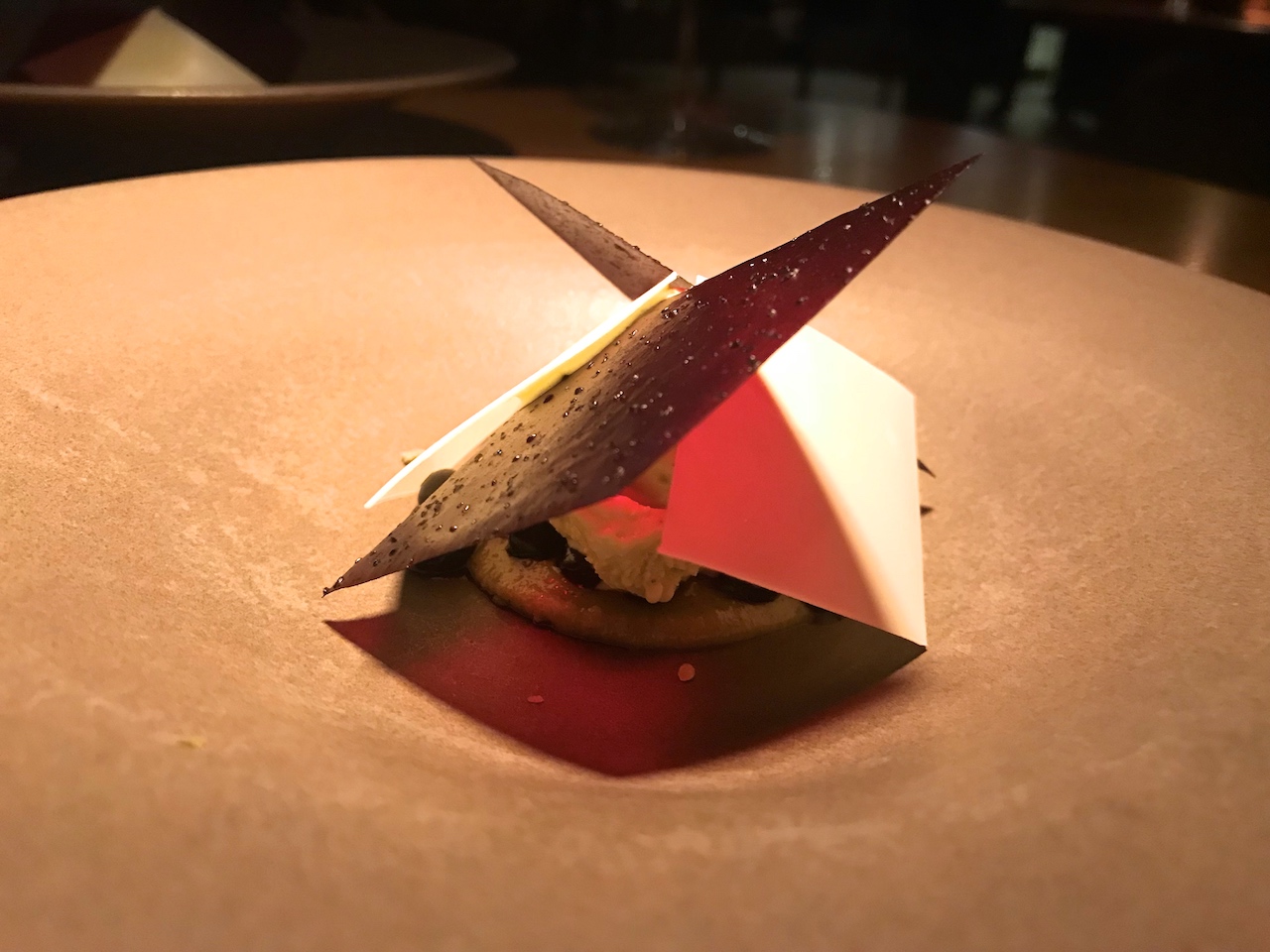
These days, it seems that a restaurant which has made a name for itself in Scandinavia cannot escape being labelled as "New Nordic", an empty marketing term which has long gone past its sell-by date. Furthermore, it's a generalising term that does not do justice to the individual fingerprint of some of Scandivia's best chefs, let alone a chef like Magnus Ek, who's been flying the flag of Swedish cuisine with passion and dedication for almost 25 years. The team at Oaxen Krog delivered a top-end meal today, displaying intelligent and precise cooking with visually attractive dishes that focused on the natural flavour of the main ingredient
The menu is centred on seasonality and exceptional ingredients, and excelled in outstandingly pure and profound flavours, staying away from the weird, raw stuff, the kind you sadly find so often in hyped "New Nordic" places; they operate on a different level here with meticulous attention to detail. It was hard to pick a winner today, but, if pressed, I would pick the exciting cabbage and potato miso dish, quickly followed by the asparagus and the cod, three highly creative dishes with carefully orchestrated flavours, that show that this restaurant is not resting on its two-star laurels.
Not surprisingly, service was exquisite and friendly, and the staff was very knowledgeable about the wines. Oaxen Krog is at the top of their game - put yourself in their capable hands and you will leave the restaurant with a big smile on your face.
Beckholmsvägen 26, Stockholm, Sweden













